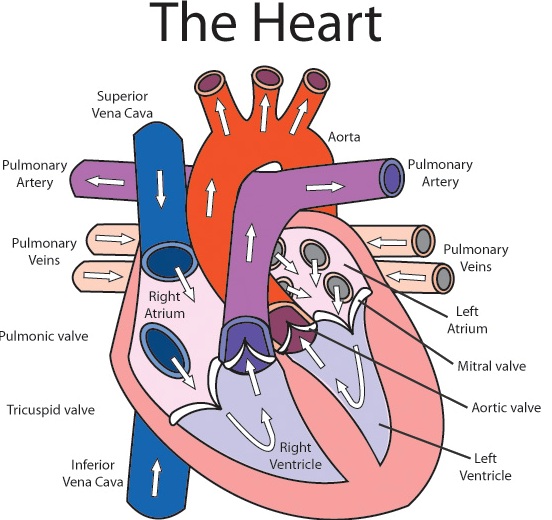Aarti Gupta
Last Activity: 11 Years ago
Heart is an pumping organ of our bod which pumps the blood to all parts of body..Human heart consist of
4-chambers-two auricles and two ventricles.These are
1.Left auricle,left ventricle and
2.Right auricle,right venticle.
Right part of heart has deoxygenated blood and left part has oxygenated blood so there is complete separation of oxygenated and deoxygenated blood in human’s body.There is auriculoventricular septum between each right as well left auricle and ventricle.Right auricle is separated by right ventricle by
tricuspid valve,while left auricle is separated by left ventricle by
bicuspid valve or also known as mitral valve. Arteries and veins are the blood vessels of blood circulatory system.Arteries always carry oxygenated blood
except pulmonary artery which carry deoxygenated blood.Veins carry deoxygenated blood
except pulmonary vein carrying deoxygenated blood.
Two mein veins namely superior and inferior vena cava bring deoxygenated blood to right auricle of heart from upper and lower part of body respectively.This blood is then passes to right ventricle from right auricle on its contarction and tricuspid valve gets closed at once so as to prevent back flow of blood from ventricle to auricle producing first heart sound called
lubb.From there the deoxygenated blood is then passes to pulmonary artery as right venticle opens in pulmonary artery.As the blood enters in this artery the valves present there gets closed producing second heart sound
dup and prevent back flow of blood.This pulmonary artery carry the blood to lungs for oxygenation.From lungs after oxygenation ,oxygenated blood is carried to left auricle by pulmonary vein.Left auricle contracts and send the oxygenated blood to left ventricle, bicuspid valve present there gets closed at once.From left ventricle is then sent to aorta as left ventricle open in aorta which send the oxygenated blood to all parts of body.In this way pumping action of heart pumps the blood to all the parts.


 10 grade science> explain the function of the heart with th...
10 grade science> explain the function of the heart with th...
 3 Answers
3 Answers















